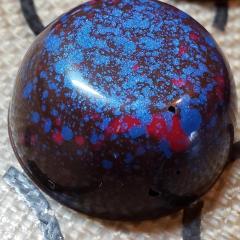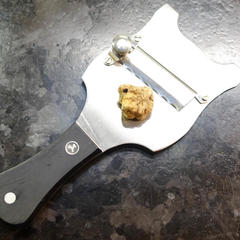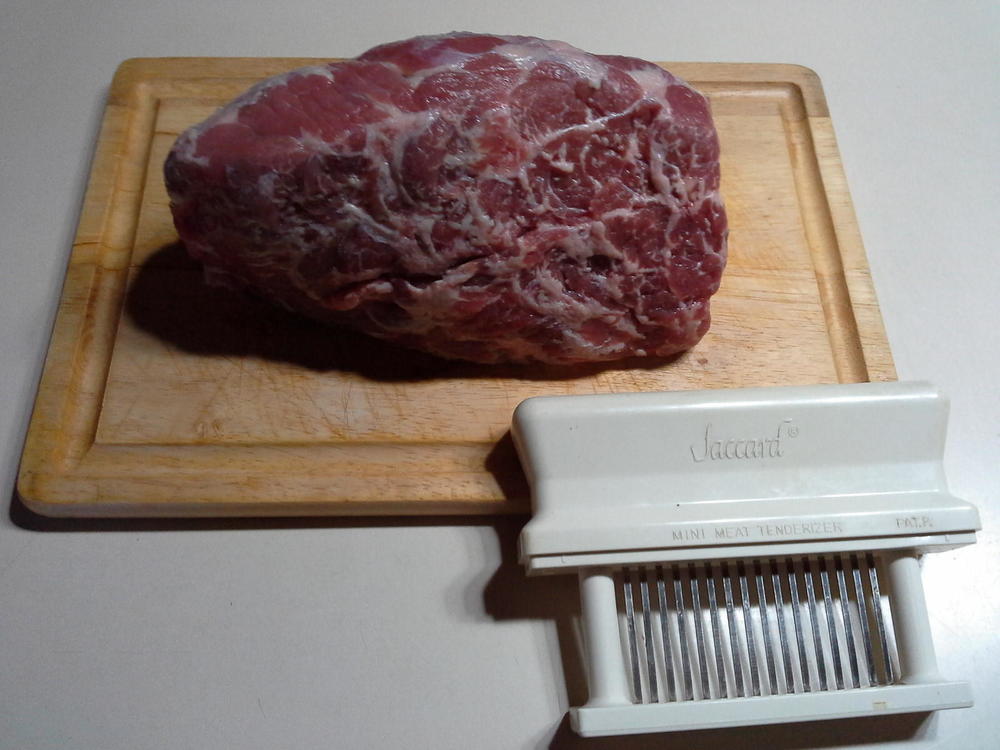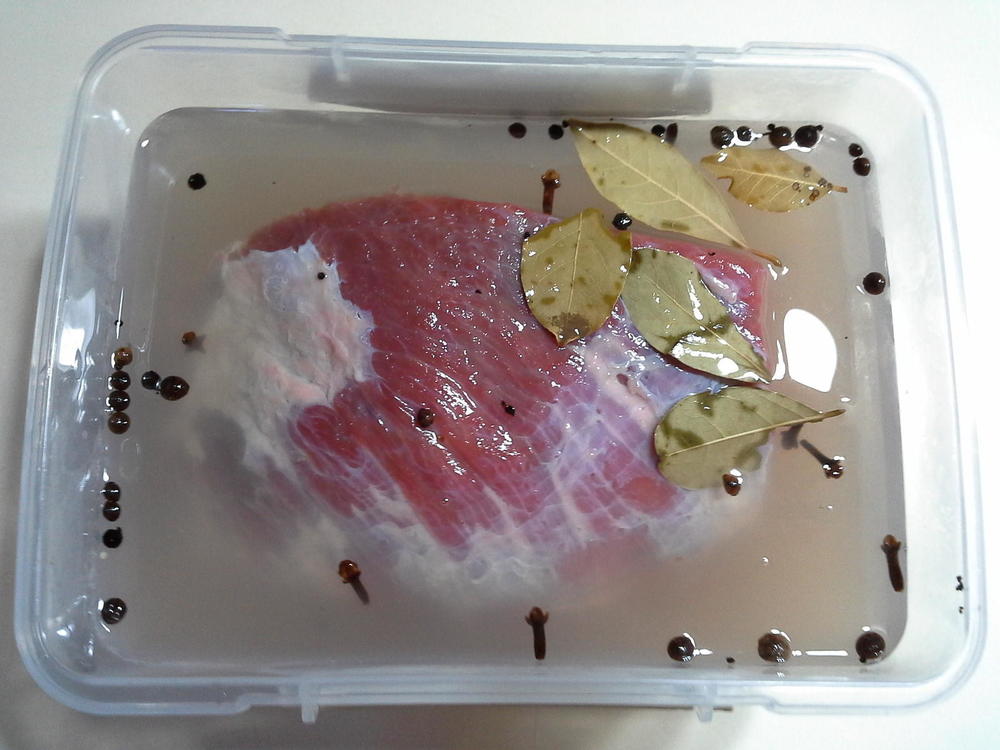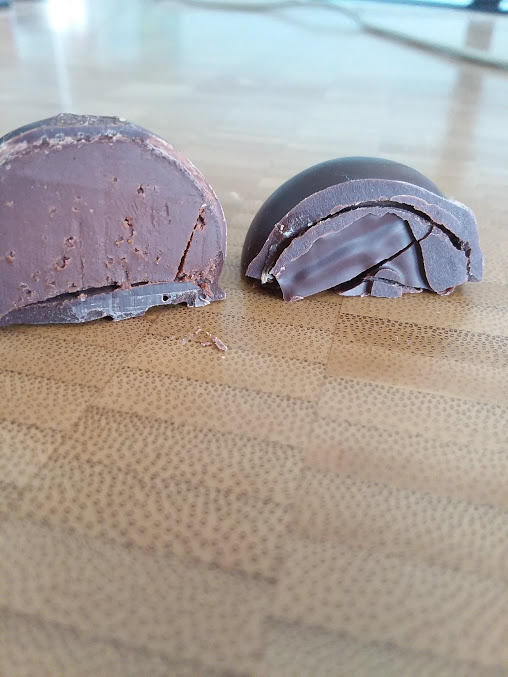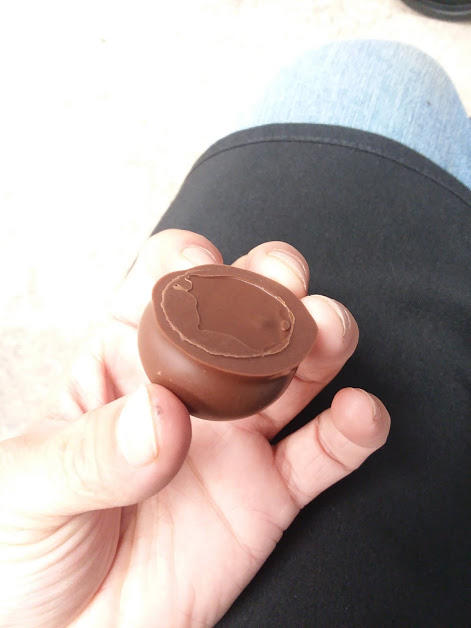Search the Community
Showing results for tags 'Troubleshooting'.
-
(1) I have a Miele Induction cooktop and a recently purchased Lodge Cast Iron 12 inch skillet. I have been poring over recipes from Cooks Illustrated and many of them recommend pre-heating the skillet in a 500F oven and then placing the skillet on a cooktop (no mention of glass cooktop or induction). Before I go ahead and try this, am I running the risk of damaging the cooktop by placing a pre-heated CI skillet on to the (Schott Ceran) surface? (2) A related question is that, on admittedly little use of the Lodge CI so far, I have triggered the overheating feature of the induction cooktop resulting in the burner in use shutting off. I have not used the burner any higher than 7 out of 9 and even then and for about five minutes for pre-heating. This is frustrating to say the least. I have had the same problem with a new Matfer 12" carbon steel skillet while trying to season it.
-
I was cooking for a party last night at which a gluten free cake was served for dessert. I had a few bites and aside from the cake being dry and the frosting very sweet, there was that tell-tale grittiness that GF baked goods seem to have. This particular bakery uses a blend of millet, sorghum, tapioca and potato flours. I used some Bob's Red Mill GF flour to satisfy a customer request for GF shortbread and found the same grittiness - they use garbanzo bean flour, potato starch, whole grain white sorghum flour, tapioca flour and fava bean flour. Obviously some sacrifices of flavor and texture are made when trying to replicate the magic of gluten, but why can't these flour blends be softer? Can't they be milled more finely? Or is it just the way the particular starches or proteins in those other flours are felt on the tongue? It's like that chalky cold cooked rice texture, do you know what I mean? Why can't it be better? Almost every time I eat something made with substitute flours, it makes me sad and want to fix it.
- 14 replies
-
- 2
-

-
I made and dipped some sponge candy in dark chocolate the other day. It was probably my second or third time ever tempering chocolate (seeding method), so while I roughly understand the process, I'm far from experienced. I didn't have much chocolate on hand, so I had to split the dipping into two batches on separate days. The first batch set perfectly. The second batch of chocolate appeared to be in temper - when I tested it with a cold knife, it developed the appropriate shine within a few minutes. I proceeded to use all of the chocolate and then move the pieces to a slightly cooler area, but after I cleaned up, I returned to find that every single one had bloomed badly. To my surprise, however, when I ate one of the bloomed pieces after letting them set for 24 hours, I found that it had the hardness and snap I would expect from properly tempered chocolate - certainly not the mushy, almost frosting-like texture that I've seen before in completely untempered chocolate. The chocolate I was using was not particularly fluid, if that matters (Guittard's 70% "baking bars"). I understand that bloom can have a million different causes, but since I used the exact same chocolate and technique both times with dramatically different results, I was hoping to narrow down the possibilities before I risk another attempt. In particular, I was wondering if a warm kitchen could cause this type of problem. I keep a combination thermometer-hygrometer in the kitchen, and on the second day, it was around 77 degrees Farenheit while I was working (far from ideal, but it's what I had to work with). Regardless, I didn't move my finished pieces to the fridge, since it is my understanding that rushing the setting process will interfere with proper crystallization (Greweling mentions this in the context of ganache, but also says the same is true for chocolate). I guess I sort of naively believed that as long as the temperature of the chocolate in the bowl was controlled properly, and the room wasn't warm enough to heat up and literally re-melt the setting pieces, I would be fine. I don't recall the exact kitchen temperature on the first day, but I believe it was around 72-74 degrees Farenheit, definitely cooler than the second day. I found some posts while browsing eG that reference the "latent heat of crystallization" and describe this type of loss-of-temper, but always in the context of molded chocolates, rather than dipped chocolates. I presume the reduced ventilation that chocolate in a mold receives makes the issue more common?
- 2 replies
-
- Chocolate
- Troubleshooting
-
(and 1 more)
Tagged with:
-
Hi! I am making molded chocolates at home and just started airspraying cocoa butter into the molds. I only have R & R cocoa butter. I haven't been able to find any discussions here about using it. I know I am tempering the cocoa butter and I have a Grex Tritium (side feed) with a .7 needle. I have a California Air Tools compresser 1 HP, with an 8 gallon tank. The cocoa butter seems to clog in the airbrush, and I have to heat it with my blowdryer every few (2-3) minutes to keep it running. It seems I have to use high pressures to get any spray from the gun. I wish I hadn't gotten the side feed, but I didn't know better. Could the brand of cocoa butter be part of the cause? It splatters a lot as well. II am loving the airbrush but I know I have much more to learn yet! I would appreciate any help to help improve my spraying!
- 5 replies
-
- Chocolate
- Troubleshooting
-
(and 1 more)
Tagged with:
-
Recently I watched a visit to an Entemann's bakery where they ran all the doughnuts under a UV light to kill mold spores before packaging. A few days later I was at Staples, where they had 'room sanitizing' UV lights on clearance and I'm thinking it couldn't hurt to get one and shine it on my bonbons before I cap them. Also to sanitize the kitchen in general, especially the walk-in fridge. Does anyone have experience with UV lights in a food production setting? Will the cheap one from the office supply store help me at all? thanks!
-
In another thread, one of our members @scott123 said that he is looking for a Chinese pickle jar. Similar to this: Or this: Since we have a lot of members in the New Jersey, New York, Philadelphia area, I thought someone might be able to help him out. My little Chinese restaurant supply has a whole range of different types and sizes but unless he is planning to take a vacation to Costa Rica soon, that doesn't help a bit.
-
Pork Belly which is vacuum sealed and was sous-vide-d for 48 hours. It's been sitting in the fridge for a few months, not in the meat drawer (which is close to freezing). I was thinking of putting it (still wrapped) in the Anova Oven at sv temperatures to get warm, and then opening the bag. If it still smells okay, can we eat it?
-
I'm relatively new to chocolate making but now that I've finally got the hang of tempering (by hand using the seeding method) I'd like to work on incorporating less air during the process. I mainly make bars at the moment so I can tap out air bubbles after filling but I want to start making dipped biscuits and that's not going to work! I've watched oh so many videos of people stirring their chocolate while tempering and can't pick up any nuances that make their process different to mine, though they clearly have significantly less air in their mixture. Any ideas how I could fix this problem or should I consider incorporating air bubbles into my biscuit design?
-
Hi all!! I work at an amazing little New Zealand Style ice cream shop in the beautiful Denver Colorado. I was hoping to get a little help on the subject of adding fruit into ice cream after extracting it and ensuring that, when the ice cream is frozen, the fruity bits don't turn into rock hard shards. I am planning on doing a cherry chocolate ice cream and I was going to soak some dried cherries that we're no longer using for something else. I was planning on using some brandy and a ton of sugar, but I was really hoping someone had a tried and true method they could send my way so that I KNOW that the fruit will be luscious as it's frozen. If you have a certain sugar ratio. I know there is the brix test, but to be honest it's been many years since pastry school and I am very rusty. Would love to hear from some of my fellow sugar-heads. Thank you! Amy
- 11 replies
-
- Confections
- Dessert
-
(and 2 more)
Tagged with:
-
I take great pride in that knowing the fact that I can replicate recipes on my own. I've had some pretty good success with coming up with flavors and foods that remind me of my youth, specifically, takeout items. I think I do a pretty good job of burgers, fried chicken, pizza, a multitude of a Chinese food dishes, etc. One item that I cannot seem to figure out, which should be so simple to do, but it's frustratingly and deceptively difficult, is Asian broth. I'm talking wonton soup and phö broth. I can't figure it out and I need help. I've scoured the forums here and tried everything. But I can't get a clear broth and I can't get the right flavour. I need to know what I'm doing wrong, I've spent a decade trying to figure this out. To me, there is nothing in this world like good soup broth. Can someone find it in them to help me, please? I would be forever grateful. Regards, Mike
-
This probably sounds like a strange subject to bring up when most of you, as @CantCookStillTry would say, are up to your knickers in snow and ice but some of us right now are in a heat wave. Although Costa Rica is in the northern hemisphere, Central America only has two seasons. Wet and dry. Wet season is from sometime in April to sometime in November so that puts us in the dry season right now and our two hottest months are March and April. CCST is in Australia and going through a real hot time. We'd like to know what you do to beat the heat. What are your favorite hot weather recipes? How do you cook in the hot weather to keep from heating up your kitchen? Any and all suggestions and anecdotes are welcome.
-
I'm a small-scale hobbyist candymaker (making things for myself and friends, not for sale), and I'm interested in learning more about sugar panning (mostly soft sugar panning, but also interested in hard panning). I recently made myself a panning machine, and understand the very basics of the process, but I'm finding it difficult to find thorough information on the process that is useful for home candymaking - most of the information I have found so far has been of the sort "here is how to use this product that you can only buy in 100-lb quantities", or "this $200 industry manual has a section on panning techniques that may or may not be useful, but you can't tell until after you buy it". Is there a good book/website/other source that thoroughly explains all parts of the panning process with enough detail to figure out how to do things with the materials at hand, and more importantly how to know at each step if things are going right? I have access to the book "Confectionary Science and Technology", which has been a HUGE help, but there's still quite a bit that it doesn't talk about. I also have a couple of specific questions, and would appreciate any info: 1. How do I add color? Adding gel food color to the syrup only provides slight coloration, and I have food color powder but am not sure if I should add it to the syrup, to the sugar, or just it to replace the sugar. 2. I have some carnauba wax to use for polishing, but I can't find any info on how to use it - do I just pour a small quantity of melted wax to the centers in the pan? Do I need to mix it with anything? Huge thanks in advance for any information you can provide.
-
Having experienced the "Edible Balloon" dessert at Alinea, I have been on a quest to try this at home. Only recently was I able to find purportedly a recipe: https://www.buzzfeed.com/raypajar1/these-edible-helium-balloons-are-dessert-from-the-future?utm_term=.ut6r3PnMk#.acGNVWmd6 the video of which is found below. I tried this and probably no surprise, it failed. The bubble collapsed / popped with only a little distension. I wasn't sure if the problem was that a "secret" ingredient (e.g. some kind of surfactant to stabilise the bubble or using a different kind of sugar) was missing. Or maybe I didn't allow the mix to come to correct temperature etc. Elsewhere I thought I had read that the original recipe was in effect some kind of taffy. Has anyone else had success, or do any candy makers /modernist chefs, have suggestions they are willing to share?
- 13 replies
-
- Modernist
- Troubleshooting
-
(and 1 more)
Tagged with:
-
I like to make roasted eggplant/aubergine for baba gahanouj, bharta (etc.) on coals that impart a wonderful smoky flavour. I've had good success doing it in a barbecue (actually a Big Green Egg). So, now that it's winter, I thought "why not try it in the fireplace, after the fire has burnt down to glowing coals?" I cut a few slits in the eggplant so that it wouldn't explode, did NOT wrap it in foil, thinking that would just seal out the smoky flavour, and popped it into the fireplace (with glass doors) for 15 min. It came out looking good, perhaps a little under-cooked, but basically OK. The taste was TERRIBLE - very strong flavour of fire place ash. I only had a couple of bites, despite my Methodist ancestors looking disapprovingly over my shoulder, because it really was bad. So has anyone else tried this? I'd like to make it work. Should the eggplant be wrapped in foil? Should I wait until the coals have died down further? Does it depend on the type of wood? This was mainly aspen - crappy firewood at best, but it was free (Methodist ancestors won this time.).
-
Hello and Happy Holidays! I own an ice cream company and am looking for some information about equipment to use for scaling large batches of caramel. Right now, we cook sugar over electric heat in an approx. 6 qt. stainless steel pot. Once the caramel is at the correct color and temp (more on that below), we add our dairy to the hot mixture. Obviously, this is not a viable option for producing large batches. I'm familiar with confectionary equipment from Savage, but don't have the budget for an automated piece. Does anyone have experience with using just one of their copper or stainless steel kettles over a regular sized burner on electric heat? We've tried to use a single larger flat bottom pot sitting in the middle of all 4 burners on the stove to make a large batch of caramel, but it doesn't heat evenly. I'm wondering if the rounded bottom of the kettle helps the entire pot cook evenly -- would we be able to set the kettle right on the burner; or, have to use it in a double boiler setting? Additionally, any recommendations for thermometers that work well with caramel would be welcomed. We've used digital probes and candy thermometers, but on numerous occasions, the color and smell of the caramel that we associate with "doneness" is a dramatically different temperature for each batch. I came across a similar post on this topic from 2016, but aside from a recommendation for a large piece of equipment from Savage, there wasn't any other feedback. Hoping to get some good input that will bridge the gap between extremely small batches and mass production.
-
Hello everyone, I am in the process of locating a commercial kitchen space to rent in order to produce my chocolates on a larger scale, for retail and wholesale. The challenge is that I have not been able to locate a space that has air conditioning or any kind of temperature control. Even if everything else in the facility is perfect, that's the one issue that keeps coming up. Can anyone provide guidance regarding the feasibility of working in a non temperature controlled space, and if there are any work arounds? I'd have full access to fridges, freezers, etc... Thanks in advance for any help or experiences you can share! Miriam
- 18 replies
-
- Chocolate
- Confections
-
(and 1 more)
Tagged with:
-
Hi, I'm David. I'm in the process of starting a new venture, and need some advice. I'm starting a catering company to cater to 4 golf courses, and hope to expand into other offsite catering after a year or so. I'm looking for a space to put a central kitchen to cook everything, and truck it out from there. We will be serving about 1200 people per weekend. Im having trouble visualizing how big of a kitchen space I'm going to need, and am having trouble finding anything online to help calculate the size of said space. Any help or advice would be greatly appreciated. Thanks in advance, Chef David
-
Posted 1 hour ago My truffles are cracking and leaking even when dipped at room temperature. I am so frustrated! Also some centres are too soft to dip unless chilled or frozen, suggestions? Also anyone have a good butterscotch truffle recipe with no icing sugar or cream cheese involved? thank you!
-
At Groundhog's Day each year I start hunting for a good piece of meat to make corned beef for Saint Patrick's Day. I found the perfect piece yesterday and I have the perfect recipe (I found it 20 years ago on Food Network). I'm all set except that I have a small problem. My recipe calls for saltpeter and my supply is running low. I'm all set for now but saltpeter is impossible to find in Costa Rica. I usually have my grandson bring some when he comes but he almost always has a panic attack when he does it. I just can't imagine why he gets so nervous just bringing a little white bag of powder through customs. However, I can buy curing salt here. I've been on Google trying to find a pundit who can give me an amount substitution for curing salt and saltpeter. They all said that it can be done but no one seems to have a clear idea of how much to use and by how much I need to adjust the salt in the recipe. Because we have some real experts among our members I'm hoping someone can give me an idea about how to do this. Please, I need your help. Homemade Corned Beef I started my Saint Patrick's dinner yesterday. I used a homemade corned beef recipe that I have had a lot of success with. Corned beef is totally unheard of in Costa Rica so it is homemade or nothing. I love it so much that I make it at least two or three times a year. My biggest problem has been finding the meat that I need. The only type of cattle raised here are a big Brahma cross and they are all pasture-raised. The meat is lean and stringy and they always cut the brisket into small strips to be used for soup. To get a brisket you have to go to a slaughterhouse and buy the full brisket. Recently, I found a cut of meat that is not sold in the supermarkets or in the 'boutique butcher' shops. It is considered peasant food and it is wonderful. It is called giba (HEE-bah) and it is the hump of the Brahma bull. It's nice and marbled and very tender. They only sell it in the small local butcher shops and usually they have to order it for you. My two pound piece of meat ready to go. In the brine. Two weeks to go but it's going to be worth it. If anyone would like the recipe, I will post it on Recipe Gullet. Update: The recipe is here.
-
I used my homemade toffee in a cookie recipe hoping that the toffee will add a crunch to the cookie... it didn't turn out well as the toffee melted and didn't keep its hardened crunch form. How can I prevent my toffee from melting in my cookie recipe?
-
- Troubleshooting
- Cake
-
(and 2 more)
Tagged with:
-
So I've been experiencing cracks on the foot of my bonbons that I've been unable to find the cause of, hoping to reach out to the community to get to the bottom of this costly problem. I work for a small chocolate company that makes our own bean to bar couverture. We use a continuous tempering machine with enrobing belt attachment. The process: ganache is made and then piped into round silicone molds, which are then footed with tempered chocolate before being placed in the freezer until frozen enough to pop out of the molds. They are then set up right and left to thaw and dry out overnight on a equipped with fans aimed at the bonbons. The next day we send the bonbons through the enrober, and then they are transferred to a speed rack to set up, either at room temp (generally around 68-70 degrees F) or in a homemade cooling cabinet (an insulated box equipped with an air conditioner + dehumidifier + fans) that generally fluctuates between 50-56 degrees F (I know, large range). Problems occur with both milk and dark couverture, with bonbons kept at room temp or in cabinet, thickness of foot doesn't seem to make a difference (we've tried thicker and thinner). Crack doesn't immediately appear; it usually takes a couple of minutes after being completely set before showing. It looks as though the foot is popping out, cause a hairline crack between the shell and the foot. I've attached pictures. You'll notice in the photos, that when the bonbon is cut in half, the foot separates from the shell pretty significantly. Thoughts? Suggestions? Similar experiences?
- 3 replies
-
- Chocolate
- Confections
-
(and 1 more)
Tagged with:
-
I have a nice recipe for Lamb shanks Rogan Josh. The recipe uses Greek style yogurt and stock along with the various spices and a long slow braise (3 hrs plus) 7 out of 10 times the result is that the sauce has the appearance of having split the yogurt from the stock. It does not seem to affect the flavor at all, its just the appearance. Is this the result of cooking at too high a temperature at some stage during the cook?
-
I dont believe that any English translation of Carêmes works exist. An incomplete version was published in 1842 (I think) but even the that version seems lackluster for the few recipes it does cover. I think it's time the world looks to its past, but I don't speak great French and it's a huge task to undertake. I hopefully plan on publishing this work and anyone who helps me will get a very fair cut, and if we decide not to publish it, I'll put it out on the internet for free. I'm working in Google docs so we can collaborate. I'm first cataloging the index to cross reference the pre-existing incomplete English version to give us a reference of what yet needs to be done, and from there we will go down the list of recipies and Translate them one by one. Simple google translate goes only so far, as it is 1700s French culinary terms and phrases being used. I'd like to preserve as much of Carêmes beautiful and flowery language as possible. Who's with me?
-
How to do it? I have a bag of non-gluten flour...probably just run-of-the-mill white...and a bag of gluten. Both go back a time or so. And really I have no use for either. The question is one of ratios. I know that one probably can't get it bang on and I won't be using it for baking cakes, but rather for making sauces or adding it here and there where 1/3 cup of flour is added to the mix and the gluten content is not paramount to the finished product. I Googled it seven different ways and found nothing useful. Some advice please.




